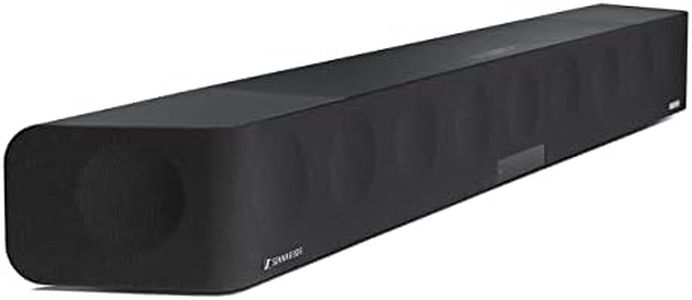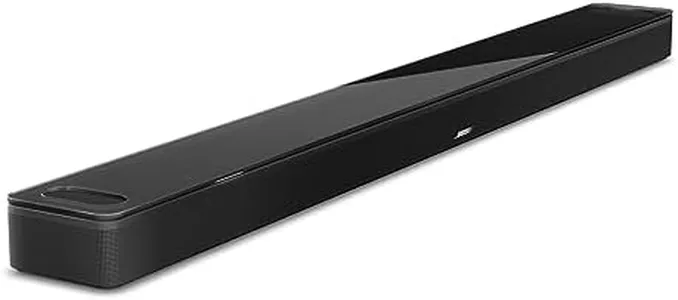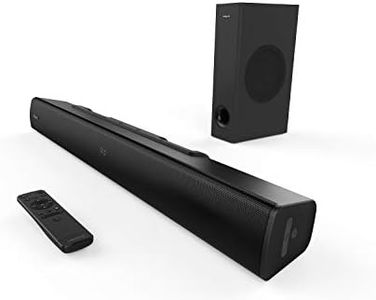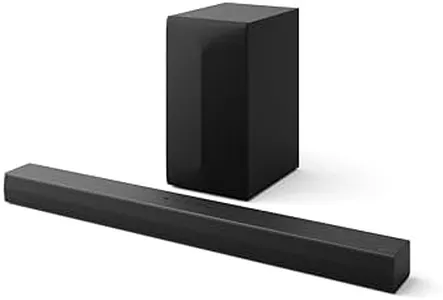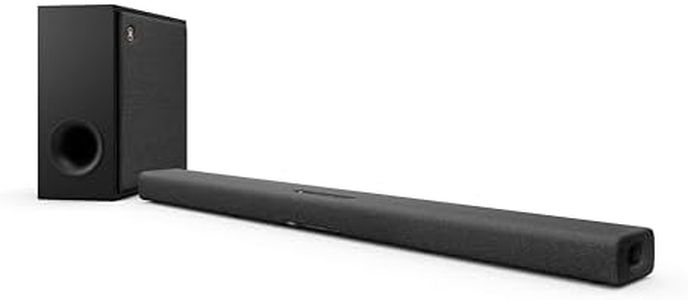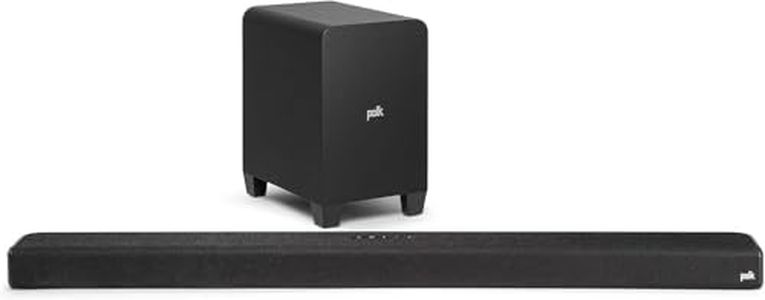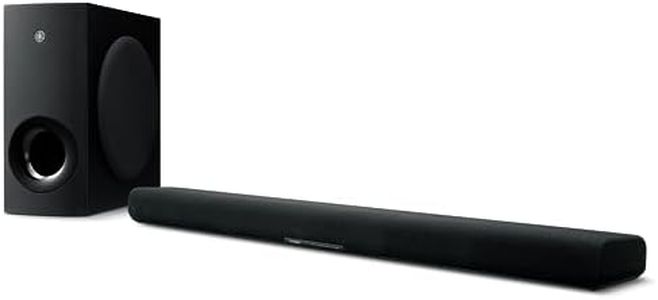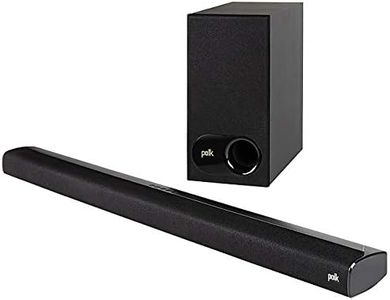We Use CookiesWe use cookies to enhance the security, performance,
functionality and for analytical and promotional activities. By continuing to browse this site you
are agreeing to our privacy policy
10 Best Affordable Sound Bars
From leading brands and best sellers available on the web.Buying Guide for the Best Affordable Sound Bars
When shopping for an affordable sound bar, the key is to find a balance between price and performance that meets your needs. Sound bars are a simple way to upgrade your TV's sound without complicated installations or big speaker systems. Since not all sound bars are created equal, you'll want to pay close attention to the main features and specs that make a difference in your everyday use.Number of ChannelsThe number of channels in a sound bar refers to the number of individual speakers or sound outputs it has, such as 2.0, 2.1, or 5.1. A 2.0 sound bar has two speakers (left and right), a 2.1 adds a subwoofer for better bass, and higher numbers like 5.1 have additional speakers for surround effects. More channels can create a more immersive experience, but can also mean a bigger or more complex setup. If you just want clearer dialogue and better sound than your TV, a 2.0 or 2.1 will do. If you love movies and want some surround effect, look for 3.1 or 5.1 channels.
Connectivity OptionsConnectivity options describe how the sound bar connects to your TV or devices. Common methods are HDMI ARC, optical cable, Bluetooth, and AUX. HDMI ARC offers easy, high-quality connection and lets you control the bar with your TV remote. Optical is also good quality but may lack some advanced features. Bluetooth helps you play music from your phone wirelessly. Consider what connections your TV supports and how you plan to use the sound bar (just TV sound, or also music from a phone?) to decide which options are most important.
SubwooferA subwoofer is a standalone speaker designed to handle bass sounds, like explosions or deep music notes. Some affordable sound bars come with a subwoofer—either built-in or as a separate piece. Built-in subwoofers save space but generally have less power, while external subwoofers provide richer and deeper bass. If you watch lots of action movies or listen to bass-heavy music, a sound bar with a dedicated external subwoofer can noticeably improve your experience. For casual TV watching, a built-in or no subwoofer may suffice.
Size and DesignThe size and design affect how the sound bar fits in your room and with your TV. Longer sound bars match larger TVs and can help widen the soundstage, while compact designs work best for smaller rooms or desks. Make sure the sound bar fits your space, can be mounted or placed where you want it, and doesn't block your TV's remote sensor.
Sound Modes and FeaturesMany sound bars have preset sound modes like movie, music, or dialogue. These adjust the sound for different uses, making voices clearer or bass punchier. Some have features like night mode (which lowers loud noises) or voice enhancement. If you mainly watch TV shows and news, look for strong dialogue or voice clarity. For mixed use, modes for movie and music add versatility.
Ease of UseSound bars should be easy to set up and operate, with user-friendly remotes, clear indicators, and straightforward controls. Some can be controlled with your TV remote or a smartphone app, which is handy. If you want something plug-and-play without a learning curve, prioritize models known for simple setup and minimal buttons.
